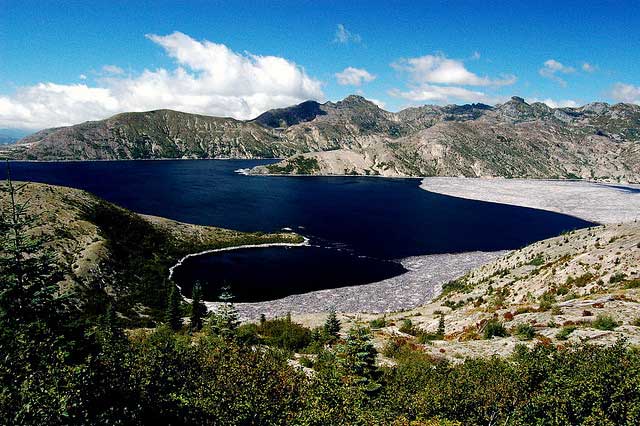The last known eruption of Mt. St. Helen was in 1857. It was thought to be dormant by many people, until it came alive in 1980. Small earthquakes deep underground started to occur, leaving cracks in the snow as evidence. Steam began to vent, and the north side of the mountain started to bulge at a rate of 5 feet per day due to the magma building up inside. Geologists during this time had very limited equipment, but they knew something was happening. However, they had no way of predicting the magnitude of the eruption that was about to occur.
 On May 18th, 1980, Mt. St. Helens erupted with the power of 500 atomic bombs, creating 350 mph winds and destroying everything within five miles. Only bare bedrock was left. The next six miles experienced 200 mph winds, which flattened the tree stands. The eruption lasted for 9 hours and caused the biggest landslide in history, followed by a giant ash cloud that lasted for 12 hours and blocked the sun. 57 people died as a result of the eruption, and hundreds of square miles of forest was destroyed. The river valley filled with ash and debris for 14 miles, and the Columbia River was shut down.
On May 18th, 1980, Mt. St. Helens erupted with the power of 500 atomic bombs, creating 350 mph winds and destroying everything within five miles. Only bare bedrock was left. The next six miles experienced 200 mph winds, which flattened the tree stands. The eruption lasted for 9 hours and caused the biggest landslide in history, followed by a giant ash cloud that lasted for 12 hours and blocked the sun. 57 people died as a result of the eruption, and hundreds of square miles of forest was destroyed. The river valley filled with ash and debris for 14 miles, and the Columbia River was shut down.The eruption changed the landscape forever, and created a new ecosystem. 120 new lakes and ponds were created by damed streams, including Coldwater lake, which is now used recreationally. There was a huge effort to replant the forest, and new roads were built to withstand disasters. Despite wonders in the beginning about how long it would take to return to normal, the recovery was very impressive. Roots of plants remained, and were able to grow through cracks in the ash or in places where ash was washed away. The eruption also prompted the creation of new soils. Since the eruption occurred in May, there was still snow on the ground, and this contributed to new life. Some animals, such as gophers, were underground and survived. The gophers mixed up the soil with volcanic ash and the old soil with seeds. This facilitated the germination of plants and allowed the ecosystem to thrive. Although the plants and animals have repopulated the area, it will take centuries for the old-growth forest to regenerate fully. The recovery of Mt. St. Helens is still just beginning, but it proves that once destroyed, nature will always find a way to bounce back.


No comments:
Post a Comment